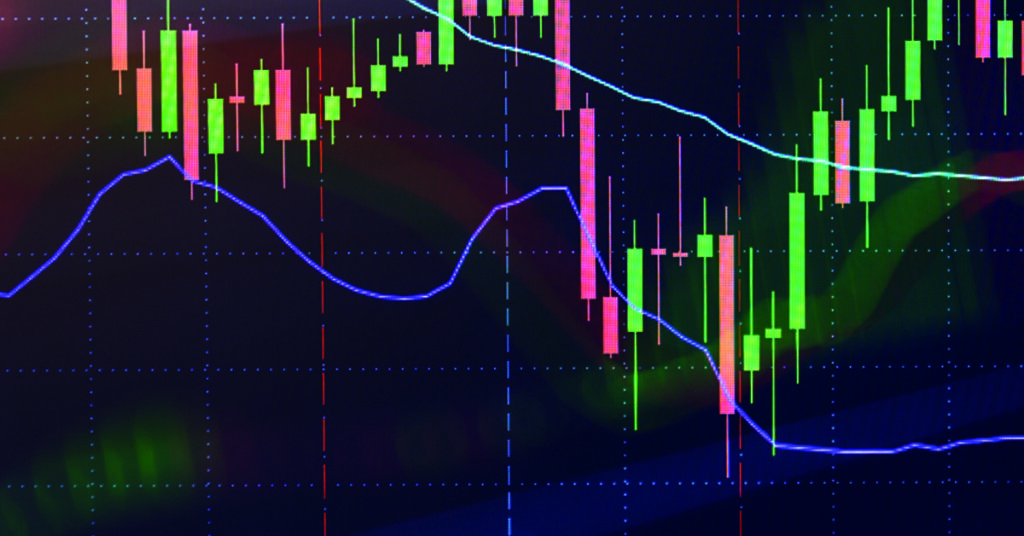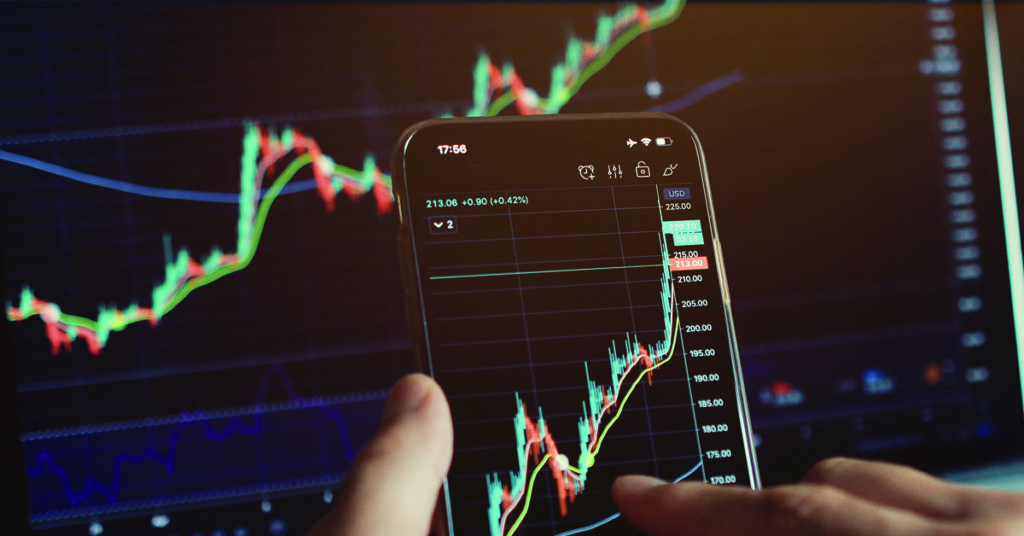Forex Line Trading

Table of Contents
Forex Line Trading or Trend Line Trading.
Forex Line Trading often mistaken for Forex Trend Line trading is a technical analysis approach used by forex traders to identify potential trading opportunities based on the price trend of a currency pair. A trend line is a straight line that connects two or more price points on a chart, and is used to identify the direction of the trend.
What is Forex Line Trading
In forex trend line (Forex Line Trading) trading, traders draw trend lines on a chart to identify areas of support and resistance, which can help them determine when to enter and exit trades. When the price of a currency pair is trending up, a trader may draw a trend line below the price action, connecting two or more higher lows, a confirmed trend is considered 3 touches. Conversely, when the price is trending down, a trader may draw a trend line above the price action, connecting two or more lower highs.
When the price approaches the trend line, traders look for confirmation that the trend will continue before entering a trade. This can include waiting for the price to bounce off the trend line or looking for other technical indicators or market drivers that suggest the trend will continue.
Defining a Trend Line
A trend is not a trend until it has three points.
UP Trend = 3 Higher Highs and 3 Lower Lows
Down Trend = 3 Lower Highs and 3 Lower Lows
Down Trend
How To Draw a Trend line.
Using Trend Lines in Trading Strategies.
Trend lines can be used in a variety of trading strategies, from simple trend-following to more complex strategies that incorporate other technical indicators. Here are some examples of how trend lines can be used in trading:
Trend following: Traders can use trend lines to identify the direction of a trend and to enter trades in the direction of the trend. In an uptrend, traders may look to buy when the price reaches the trend line, and in a downtrend, traders may look to sell when the price reaches the trend line.
Breakout trading: Trend lines can also be used to identify potential areas of support or resistance, where the price has previously reversed or consolidated. Traders may look to enter trades on a breakout of these levels, either by buying when the price breaks above a resistance level or selling when the price breaks below a support level.
Risk management: Trend lines can also be used as a tool for risk management, by setting stop-loss orders at key levels below a trend line in an uptrend or above a trend line in a downtrend. This can help to limit potential losses if the trend were to reverse.
Confirmation of other technical indicators: Trend lines can be used to confirm other technical indicators, such as moving averages or oscillators. For example, if the price is above a moving average and the trend line is also moving up, this may be a strong signal to buy.
Once a trend line has been drawn, traders look for price action to interact with the trend line to identify potential trading opportunities. For example, if the price is trending up and approaches the trend line, traders may look for a bounce off the trend line to enter a long trade. Alternatively, if the price breaks below the trend line, it may signal a potential trend reversal, and traders may look to enter a short trade.
It’s important to note that trend lines are not foolproof, and false breakouts or trend reversals can occur. As with any trading tool, trend lines should be used in conjunction with other analysis and risk management techniques to identify potential trading opportunities and manage risk.
Frequently Asked Questions about Forex Line Trading or Trend Line Trading
Another confusion is that of a Forex Trade Line.
In forex trading, a trade line refers to the record of all trades executed by a trader in a particular currency pair. The trade line provides a detailed record of the entry and exit points, trade size, and profit or loss associated with each trade.
A trade line can be useful for a trader to review their trading history, analyze their performance, and identify areas for improvement.
There are three main types of trend lines that traders commonly use:
Upward trend line: An upward trend line is a straight line that is drawn connecting two or more low points on a price chart. It represents an uptrend or a bullish trend, indicating that the market is moving higher.
Downward trend line: A downward trend line is a straight line that is drawn connecting two or more high points on a price chart. It represents a downtrend or a bearish trend, indicating that the market is moving lower.
Sideways trend line: A sideways trend line is a horizontal line that is drawn connecting two or more price points that represent a level of support or resistance. It indicates that the market is moving sideways, with neither a clear uptrend nor a clear downtrend.
A strong trend line is a trend line that has been tested and has held up over time. A strong trend line is one that connects multiple significant lows in an uptrend or multiple significant highs in a downtrend. The more times a trend line has been tested and held, the stronger it is considered to be.
When a trend line is strong, it can provide important information to traders. A strong trend line may be used as a tool for making trading decisions, such as entering or exiting trades, or setting stop loss orders. A strong trend line can also provide a level of support or resistance, indicating potential areas where the price may find support or resistance.
In addition to being tested multiple times, there are other factors that can contribute to the strength of a trend line. These factors include the length of time the trend line has been in place, the angle of the trend line, and whether the trend line is in line with other technical indicators or fundamental analysis.
Trend line trading can be a profitable strategy when used correctly, but as with any trading strategy, there is no guarantee of success. Success in trend line trading depends on the trader’s ability to identify trends accurately, set appropriate entry and exit points, and manage risk effectively.
One advantage of trend line trading is that it can be used in any market that exhibits trending behavior, including stocks, forex, commodities, and futures. Traders can use trend lines to identify the direction of a trend, potential areas of support or resistance, and to make informed trading decisions.
However, trend line trading is not a foolproof strategy and traders should be aware of its limitations. Trend lines can break or provide false signals, and traders should use trend lines in conjunction with other technical indicators and fundamental analysis to gain a more comprehensive understanding of market trends.
Additionally, successful trend line trading requires discipline, patience, and effective risk management. Traders should not force trades based solely on trend line signals, but should use trend lines as one tool among many in their trading toolkit.
In conclusion, trend line trading can be a profitable strategy when used correctly, but success depends on the trader’s ability to identify trends accurately, set appropriate entry and exit points, and manage risk effectively. Traders should use trend lines in conjunction with other technical indicators and fundamental analysis to gain a more comprehensive understanding of market trends and make informed trading decisions.
There is no single forex strategy that is universally considered the most powerful, as the effectiveness of a strategy depends on a number of factors, including market conditions, trader skill, risk tolerance, and personal preferences.
That being said, some popular forex trading strategies that are often considered effective include:
Trend Following Strategy: This strategy involves identifying trends in the market and entering trades in the direction of the trend. The strategy involves using technical indicators such as moving averages, trend lines, and momentum oscillators to confirm the trend and identify entry and exit points.
Breakout Strategy: This strategy involves identifying key support and resistance levels and entering trades when the price breaks through these levels. Traders may use technical indicators such as Bollinger Bands or moving averages to identify potential breakout points.
Swing Trading Strategy: This strategy involves holding positions for a few days to a few weeks and taking advantage of short-term price fluctuations. Traders may use technical indicators such as oscillators and moving averages to identify potential swing points.
Price Action Strategy: This strategy involves analyzing price patterns and using them to identify potential trading opportunities. Traders may use candlestick chart patterns and other price action signals to confirm entry and exit points.
It’s important to note that no trading strategy is foolproof and all strategies come with risks. Traders should always use risk management techniques such as setting stop-loss orders and managing position size to minimize potential losses. It’s also important to backtest any trading strategy before using it in real trading, to determine its effectiveness under different market conditions.
The best timeframe for trading depends on the individual trader’s trading style, objectives, and risk tolerance. Traders can choose from a variety of timeframes, including short-term, medium-term, and long-term.
Short-term timeframes, such as 1-minute, 5-minute, and 15-minute charts, are often used by day traders and scalpers who seek to take advantage of small price movements within the day. This approach requires a high level of skill and discipline, as well as the ability to make quick decisions in a fast-moving market.
Medium-term timeframes, such as 1-hour and 4-hour charts, are often used by swing traders who aim to capture medium-term trends that may last for several days to a few weeks. This approach requires a more relaxed approach and a larger stop loss, as traders are seeking to capture larger price movements.
Long-term timeframes, such as daily, weekly, and monthly charts, are often used by position traders who aim to capture long-term trends that may last for several weeks to several months. This approach requires patience and discipline, as traders are seeking to capture larger price movements and may hold positions for an extended period of time.






Responses